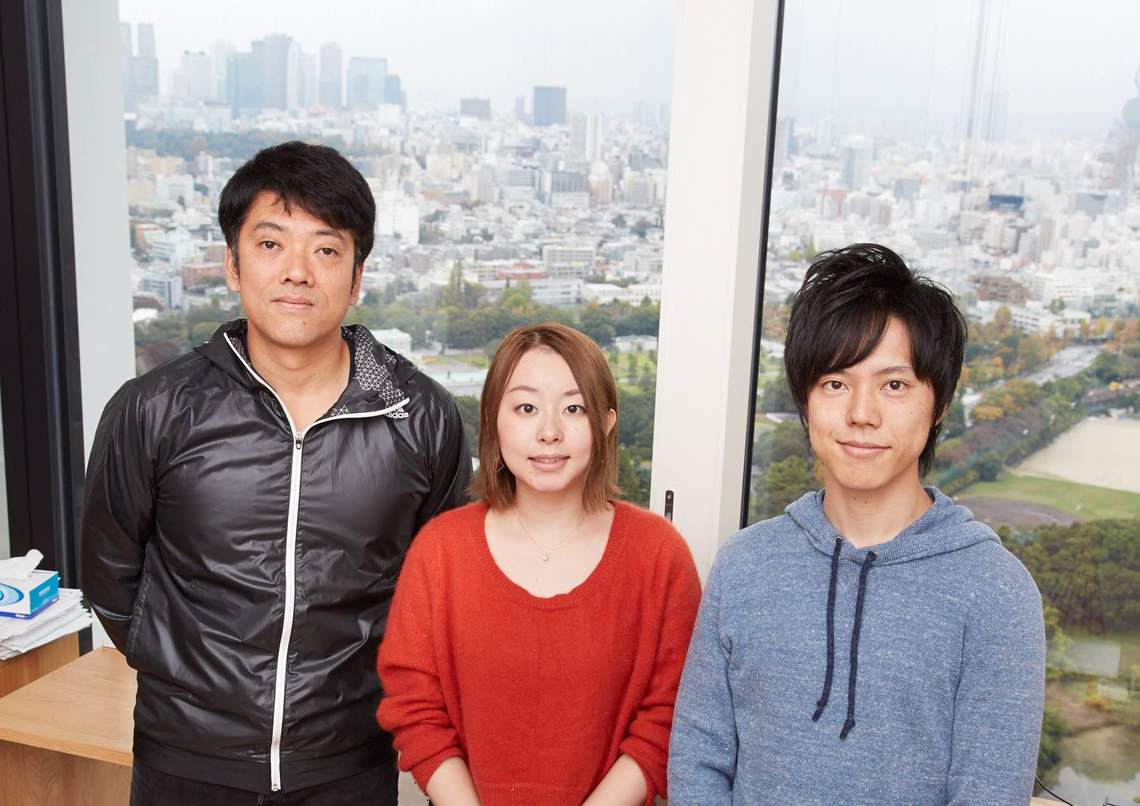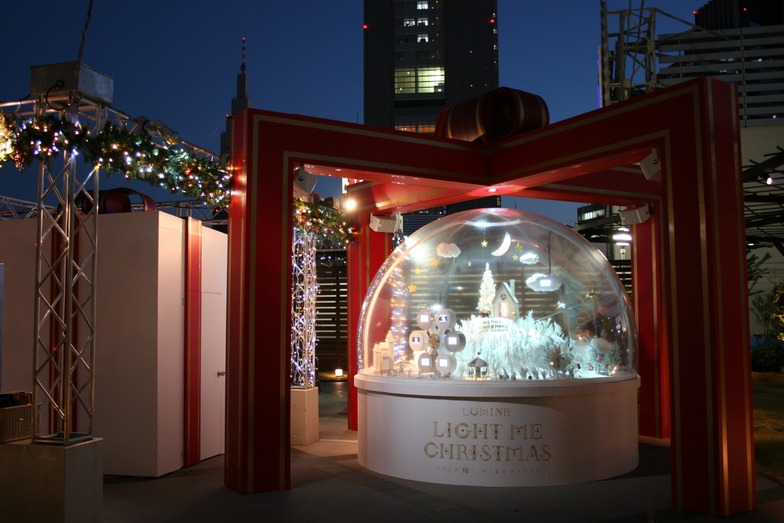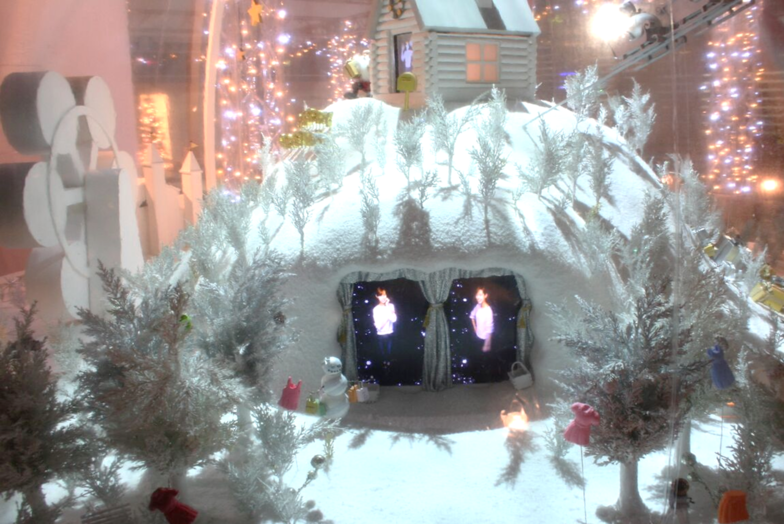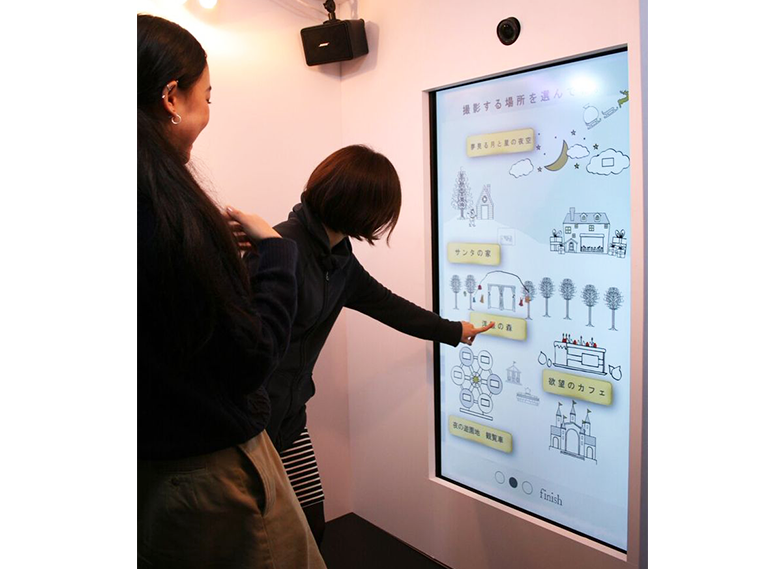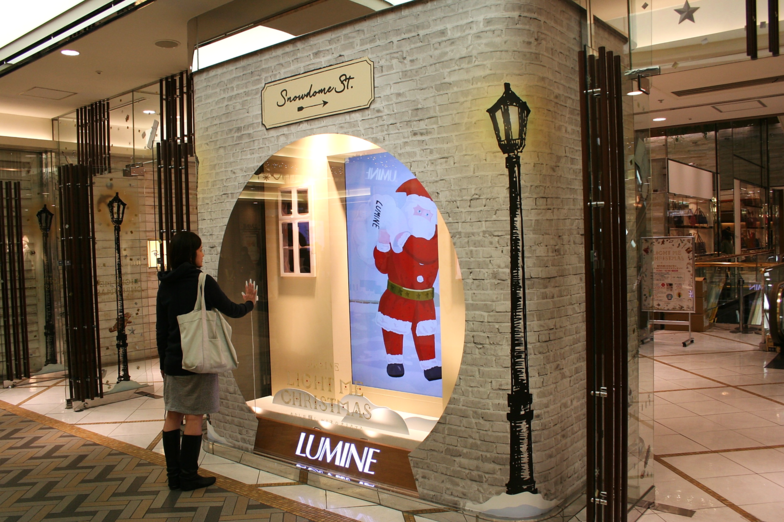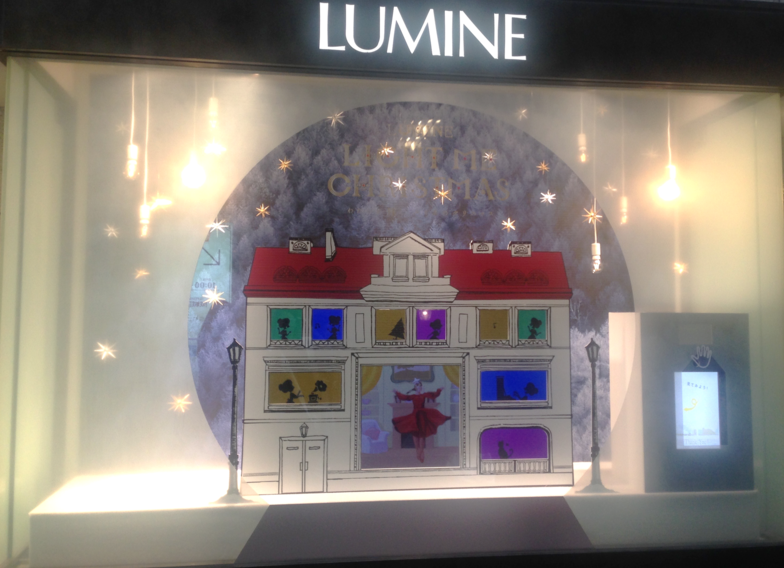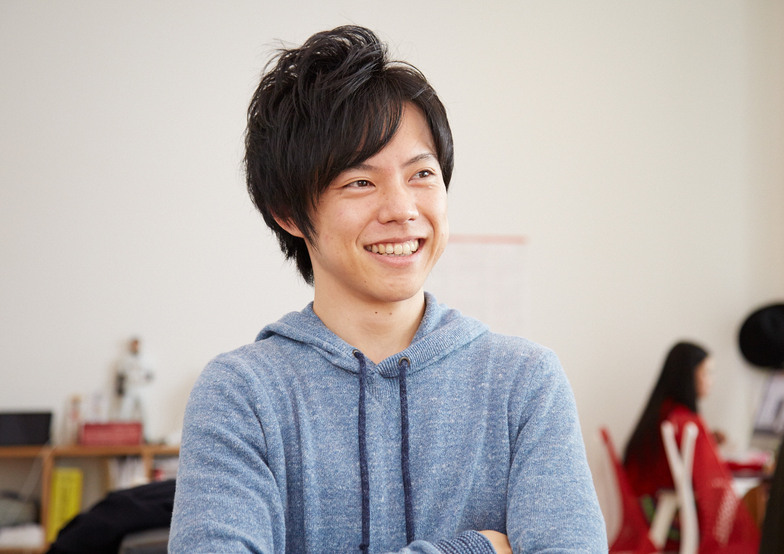Lumine's Christmas campaign began on November 17th. Experience events blending design and technology are being held at "Lumine Shinjuku," "Lumine Yurakucho," and "Lumine Yokohama."
Media Concierge Akinori Ohtani, Creative Director Haruka Furuya, and Yusuke Tomizawa from Dentsu Inc. Promotion & Production Bureau discussed how to create "technology that moves women."
Furuya: Nowadays, smartphones are always at hand, and sensors and video are constantly increasing in sensitivity and resolution. I feel technology is becoming deeply integrated into daily life. I originally worked as a video director, but over the past five years or so, the way we create video-centric promotions and commercials has changed dramatically. It's become common to create promotions that actually trigger real-world events, with the recorded footage then becoming the commercial. Simultaneously, technological advances mean hybrid proposals are increasingly demanded.
Especially for initiatives targeting women, I feel there's a need to combine technologies to create dreamlike experiences and figure out how to stage and deliver them to women. For this Lumine project, there's a device to capture yourself and a separate device to display it; various technologies are woven into that connection.
Tomizawa: This time, we have three locations: Shinjuku, Yokohama, and Yurakucho. Each uses different technology. In Shinjuku, we built a town inside a large snow globe. Inside, there are many displays that project you onto clouds, castles, houses, and more.
Furuya: It's a system where you can choose where you want to be projected, and then you appear in that location.
Tomizawa: So, you can become a resident of the snow globe city.
Furuya: Shinjuku also had a key requirement based on its location: how to let as many people experience it simultaneously. When ten people queued to photograph the "Ferris wheel," we built a system behind the scenes to switch the displays there. While not immediately obvious, the technology involved is actually quite sophisticated.
Ōtani: For Yokohama and Yūrakuchō, there were constraints on the space that prevented people from lingering too long. So, for Yokohama, we used technology where waving your hand in front of the camera sensor changes the image. For Yūrakuchō, we used sensors and face synthesis.
Furuya: In Yurakucho, when the camera captures your face, you appear inside a large house on the window display, and a maid dresses you up beautifully. We incorporated this interaction where your reflected self transforms.
Tomizawa: In Shinjuku, we also used holograms and projection mapping.
Furuya: We aimed for a multimedia approach—mixing various expression methods to avoid dependence on a single hardware solution. By blurring the boundaries of the visuals, we focused on creating a presentation that doesn't distract viewers with unnecessary elements.
Hiding the technology, even though it's a tech project
Tomizawa: The key point with this project was arriving at the approach of "hiding the technology."
Ōtani: When Furuya-san said "hide the technology," we all got chills, right? (laughs)
There's this prevailing notion that technology is something you flaunt, right?
Furuya: It's not universally true, but I think women's motivation to see something stems more from wanting to witness magic than from the fact that the technology is amazing. Cinderella cares more about whether the dress suits her than about how it magically appears with a "Bibbidi Bobbidi Boo" spell (laughs).
Ōtani: Exactly (laughs). We tend to get caught up in figuring out how to recreate the "pumpkin carriage" with tech, or how to instantly change costumes with a wave.
Furuya: Understanding technology is essential for making things happen, so I study every day too. (laughs) But lately, I've been rethinking that starting with these wild, magical ideas ("Wouldn't it be great if...") might actually be important. When you consider how culture and civilization developed by connecting these magical, wishful ideas with scientific progress. Conversely, when it comes to showcasing the technology itself, maybe we need to go back to that magical stage again. That's what "staging" is, right?
Tomizawa: When Furuya-san suggested, "Let's start by rethinking the story leading up to participation," it really made me realize again how crucial it is to properly craft the narrative—all the way down to whether women will genuinely feel motivated to participate.
Furuya: There are so many methods and technologies available now to realize a story. It's about combining them, when it comes to technology.
The goal is to integrate technology into branding
Furuya: One reason to incorporate cutting-edge tech into promotions is that it makes PR writing much easier. It's clear what technology was used—things like lumen counts or the number of projectors—and tech lends itself well to quantification. But ideally, the participating customers themselves become the primary source of communication and PR.
Tomizawa: It's crucial that technology doesn't stop at PR; we need to integrate it into branding. Since "Renewing Your Authentic Self" is Lumine's corporate philosophy, we hoped participants in this initiative would also resonate with Lumine's vision.
Otani: Mr. Furuya, you originally worked in theater in Germany and the UK, right?
Furuya: Yes, I was directing stage productions for a long time. Stage expression and advertising share a significant commonality: they both make the impossible possible. The theatrical space, like Lumine, is essentially a "box." People can't fly, become giant, or transform with a magic dress – none of that is scientifically possible. Yet, within the theater space, when the audience, actors, lighting, costumes, and technology all come together, the unreal becomes something believable and clearly realized.
Tomizawa: Exactly. The act of presenting something to an audience is something you've been doing on stage all along.
Ōtani: Something fascinating I learned talking to stage special effects people is that Kabuki is actually the most advanced in special effects technology. Even before digital technology, quick costume changes, instant enlargements, and changing backdrop panels were commonplace. The same goes for the naraku (underground stage). All these techniques originated in Kabuki. It's truly a blend of tradition and innovation; there's so much to learn from traditional performing arts.
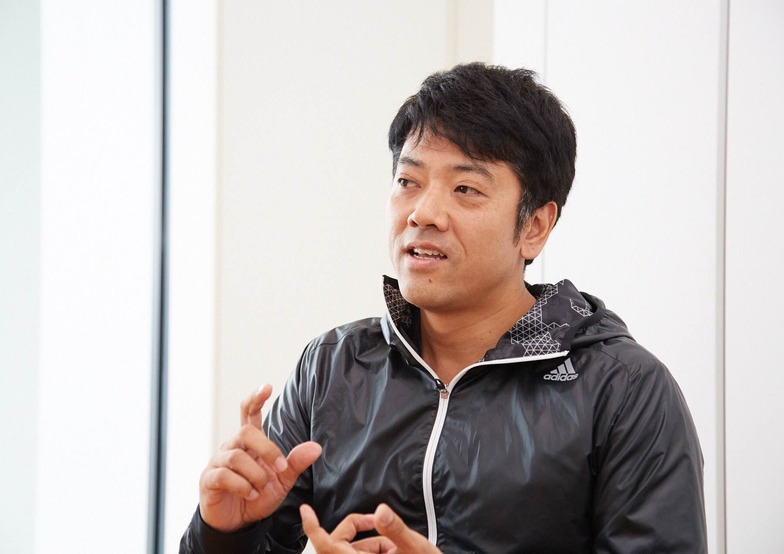
Furuya: That's right. Connecting this to Lumine, I realized the process women go through when buying clothes at Lumine is an excellent guide for designing experiential promotions. First, there's a "world or design they aspire to," like mannequins or fashion photos, where they envision themselves. Next, "choosing clothes" serves as the entry point to participate in that world. Finally, "trying on and purchasing" physically brings them into that world. It's that flow: aspiration → consideration → personalization. The snow globe experience at our Shinjuku store follows the same pattern: first, there's a beautifully designed diorama. Then, you choose your spot, arrange how you want to be seen, and personalize the experience. This project encapsulates the entire process of buying clothes. It's the very process that makes women want things.

Otani: The process of wanting something hasn't changed since ancient times, right? You set a goal for the lifestyle you want—"This is it!"—and if buying something brings you closer to that, you buy it. Women are especially amazing at setting goals (laughs).
Tomizawa: Women are so creative! Starting next spring, Lumine will launch its first service inside Shinjuku Station's New South Exit concourse (Ekina/Ekiso). Lumine aims to be a "Life Value Presenter," and we'll increasingly become a presence supporting women's dreams and stories within their daily lives. We want to support that with great projects too. Thank you for today.



